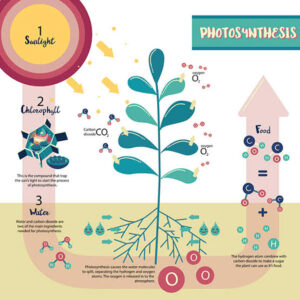Back to: Botany 400 Level
My brilliant Afrilearn scholar, welcome to another exciting lesson! I hope you’re having a great day. Have you ever wondered how scientists figure out how plants grow, absorb water, or respond to their environment? They don’t just guess—there are special techniques they use to study plants at a deeper level. Today, we’re looking at Techniques in Plant Physiological Research. By the end of this lesson, you’ll understand how scientists uncover the secrets of plant life!
Techniques in plant physiological research
Think about when you fall sick. The doctor doesn’t just look at you and guess what’s wrong. They may check your temperature, run a blood test, or use an X-ray machine to see inside your body. In the same way, plant physiologists use various techniques to study how plants function.
Let’s say a farmer notices that his tomato plants are not growing well. Is it because of a lack of water? A disease? Poor soil nutrients? To find the exact cause, scientists use different methods to study the plant’s internal processes. These techniques help in agriculture, medicine, and environmental conservation.

Techniques in Plant Physiological Research
Microscopy (Studying Plant Cells Up Close)
Scientists use microscopes to observe plant cells and tissues in detail.
With a light microscope, they can see cell structures like chloroplasts (where photosynthesis happens).
An electron microscope helps in viewing even smaller structures like cell membranes.
Spectrophotometry (Measuring Pigments and Chemical Compounds)
This technique is used to measure chlorophyll content in leaves.
It helps scientists determine how efficiently a plant is carrying out photosynthesis.
Chromatography (Separating Plant Compounds)
Just like separating different colours from a marker on wet tissue paper, chromatography helps scientists separate plant pigments and chemical compounds.
It’s useful for studying plant hormones and identifying different pigments in leaves.
Gas Exchange Analysis (Studying Photosynthesis and Respiration)
Special instruments measure how much carbon dioxide (CO₂) a plant absorbs and how much oxygen (O₂) it releases.
This tells scientists how well a plant is photosynthesising and how it responds to environmental changes.
Hydroponics (Growing Plants Without Soil)
Instead of planting in soil, plants are grown in nutrient-rich water solutions.
This method helps researchers study how different nutrients affect plant growth.
Drought and Stress Testing (Understanding How Plants Survive Tough Conditions)
Scientists expose plants to extreme conditions like drought, high temperature, or poor soil to see how they react.
This helps in developing crops that can survive in harsh environments.
Gene Expression Studies (Understanding Plant DNA and Growth Patterns)
Scientists study which genes control certain plant behaviours, like drought resistance or faster growth.
This technique is useful for improving crop varieties.
Imagine you are a scientist trying to find out why some maize plants in the North survive harsh heat while others struggle. You can:
Use gas exchange analysis to check if they are photosynthesising properly.
Apply chromatography to test if they produce special stress-resistant chemicals.
Try hydroponics to see if giving them extra nutrients makes them grow better.

Another example is when researchers develop improved cassava varieties in Nigeria. They test different plants using drought testing and gene expression studies to create cassava that grows well even with little rain.
Summary
Plant physiologists use different techniques to study how plants function. Microscopy helps in viewing plant cells, spectrophotometry measures pigments, chromatography separates plant compounds, and gas exchange analysis checks photosynthesis. Hydroponics allows plants to grow without soil, while stress testing and gene studies help in improving crops. These techniques are essential for agriculture, medicine, and environmental conservation.
Evaluation
- Why is microscopy important in plant physiological research?
- How does chromatography help scientists study plants?
- What technique is used to study how plants respond to drought?
- Explain the importance of hydroponics in plant research.
Keep going, my scholar! The more you learn, the more power you have to change the world. Whether it’s helping farmers grow better crops or discovering new ways to protect the environment, your knowledge is valuable. Keep believing in yourself, and I’ll see you in the next lesson. Keep shining!
